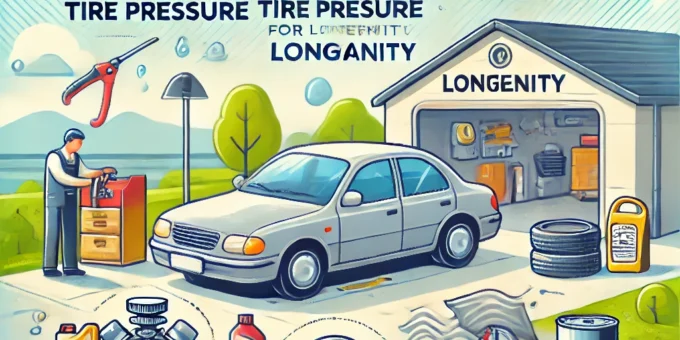
Your car is a significant investment, and proper maintenance is the key to ensuring it lasts for years while running smoothly and efficiently. Regular upkeep not only improves your car’s longevity but also enhances its resale value, reduces repair costs, and ensures a safer driving experience.
This comprehensive guide covers essential car maintenance tips to keep your vehicle in top-notch condition, helping you avoid costly repairs and unexpected breakdowns.
Why Regular Car Maintenance is Crucial
Neglecting regular maintenance can lead to costly repairs, reduced performance, and even safety risks. Proactive car care helps you:
- Prevent Breakdowns: Avoid inconvenient and expensive roadside emergencies.
- Save Money: Routine maintenance costs less than major repairs caused by neglect.
- Boost Resale Value: Well-maintained cars attract higher offers from buyers.
- Improve Fuel Efficiency: A properly maintained engine uses less fuel.
Step 1: Follow Your Car’s Maintenance Schedule
Every car comes with a manufacturer-recommended maintenance schedule, usually found in the owner’s manual. This schedule outlines when to:
- Change the oil and oil filter.
- Inspect and rotate tires.
- Replace the air filter, spark plugs, and timing belt.
Tip: Set reminders for scheduled maintenance to avoid missing essential services.
Step 2: Change the Oil and Filter Regularly
Oil lubricates the engine and prevents friction, while the filter removes debris. Over time, oil degrades and loses its effectiveness.
- Frequency: Change your oil every 5,000–7,500 miles for most vehicles (or as recommended).
- Warning Signs: Dark or gritty oil and engine noise indicate it’s time for a change.
Tip: Use the oil type specified in your owner’s manual for optimal performance.
Step 3: Monitor and Maintain Tire Health
Tires are critical for safety, handling, and fuel efficiency.
- Check Tire Pressure: Use a pressure gauge monthly to maintain the recommended PSI (found in your manual or driver-side door).
- Rotate Tires: Rotate every 5,000–7,000 miles to ensure even wear.
- Check Tread Depth: Replace tires when the tread is less than 2/32 of an inch.
Tip: Uneven wear may signal misalignment or suspension issues.
Step 4: Check and Replace Fluids
Fluids keep your car running smoothly. Regularly check and top off these essentials:
- Coolant: Prevents overheating and protects the engine.
- Brake Fluid: Ensures responsive braking. Replace it every 2–3 years.
- Transmission Fluid: Keeps the transmission system lubricated and shifts smooth.
- Windshield Washer Fluid: Improves visibility by keeping the windshield clean.
Step 5: Inspect the Battery
A weak or dead battery can leave you stranded.
- Check Terminals: Clean corrosion from battery terminals using a mixture of baking soda and water.
- Test Voltage: Use a multimeter to ensure the voltage is within 12.4–12.9 volts when the engine is off.
- Replace Every 3–5 Years: Batteries lose efficiency over time, so replace them as needed.
Step 6: Replace Worn-Out Brake Pads and Rotors
Your brakes are essential for safety.
- Warning Signs: Listen for squealing, grinding, or reduced braking performance.
- Inspection Frequency: Check brake pads and rotors every 10,000 miles.
- Replacement: Replace brake pads when they are less than 1/4 inch thick.
Step 7: Keep the Engine Healthy
The engine is the heart of your car.
- Replace the Air Filter: Change it every 15,000–30,000 miles to ensure proper airflow.
- Inspect Spark Plugs: Faulty spark plugs reduce performance and fuel efficiency. Replace them every 30,000–100,000 miles (depending on the type).
Step 8: Maintain the Cooling System
A well-maintained cooling system prevents engine overheating.
- Flush the Coolant: Replace coolant every 2–5 years to maintain its effectiveness.
- Inspect Hoses: Look for cracks or leaks in radiator hoses.
Step 9: Check the Lights and Electrical System
Ensure all lights are functional for safety and visibility.
- Inspect Bulbs: Replace dim or burnt-out bulbs promptly.
- Test Indicators: Check turn signals, brake lights, and hazard lights regularly.
Step 10: Wash and Wax Regularly
Keep your car’s exterior protected and looking great.
- Washing: Remove dirt, salt, and grime to prevent rust and paint damage.
- Waxing: Apply wax every 3–4 months to protect the paint from UV rays and weather.
Step 11: Keep the Interior Clean and Organized
A clean interior improves comfort and resale value.
- Vacuum Regularly: Remove dirt, debris, and food crumbs.
- Condition Leather Seats: Use leather cleaner to prevent cracking.
- Protect Floors: Use all-weather mats to shield carpets from dirt and moisture.
Step 12: Address Minor Issues Immediately
Small problems can escalate if ignored.
- Fix Chips or Cracks: Repair small windshield cracks before they spread.
- Handle Check Engine Lights: Don’t ignore dashboard warning lights. Use an OBD-II scanner or visit a mechanic.
- Repair Leaks: Address fluid leaks to avoid major system failures.
Seasonal Maintenance Tips
- Winter: Check antifreeze levels, inspect wipers, and consider snow tires.
- Summer: Test the air conditioning system and check coolant levels.
How to Create a Maintenance Checklist
Stay organized with a checklist that includes:
- Weekly tasks: Check tire pressure and fluid levels.
- Monthly tasks: Inspect lights and clean the interior.
- Yearly tasks: Replace the air filter and rotate tires.